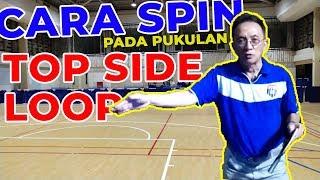Del Potro Forehand Analysis - Tennis Forehand Lesson
Description
Del Potro Forehand Analysis - Tennis Forehand Lesson. Juan Martin Del Potro has one of, if not the biggest tennis forehand of all time. Del Potro can hit winners from all areas of the court, can dominate play with his forehand and has the ability to beat players like Roger Federer, Rafael Nadal and Novak Djokovic using his forehand to control play.
Del Potro Forehand Grip
Del Potro's forehand grip is very unique, he uses an extreme eastern forehand grip, which allows him to hit the ball extremely flat if he wants to. Del Potro can still produce good levels of topspin when he needs to, but his main go-to forehand is the flat one. Federer also uses the eastern forehand grip, however, Del Potro’s grip is more extreme than Federer's.
There are two main pressure points on the grip, the heel pad of the hand being the main one when hitting a forehand with the eastern grip. The second being the base knuckle of the index finger.
If you use a western forehand grip, the pressure points would change, being more on the thumb region of the palm
Del Potro’s index base is between bevel two and three, a pure eastern forehand would have it solely on bevel three like Federer but Del Potro is more extreme with the heel pad. His base knuckle is on bevel three.
This extreme grip is the foundation of Del Potro’s forehand. If you try to hold the racket with his grip and do your normal swing, you’ll see how it impacts the angle of the strings during the stroke.
This grip is one of the main reasons his right wrist has required surgery in the past, so his forehand has come at a cost on his body and his career.
Del Potro also uses an extreme grip with his left hand on the backhand side.
Preparation
Del Potro starts off with having the racket head and grip on the same level. Once he recognizes the ball is coming to his forehand side, he'll coil the upper body and lift the racket head higher than the grip level, creating leverage in the wrist.
Federer and Nadal often have the strings facing the ground during the racket drop phase, Djokovic has his strings facing the back of the court in the power position
Del Potro then lifts the racket head above the grip which also cocks back his wrist slightly
The side of the strings he’s going to hit the ball with will remain open to the court for a while before turning off to the right side
Del Potro has his strings facing the right side of the court during the entire swing. This will allow him to hit a very flat shot, producing very little topspin. When we close the strings, it helps us to generate more topspin along with the low to high swing path during the contact zone
Del Potro has the ability to drive through the ball with a very flat swing path which allows him to really crack the ball but this wouldn’t work for most players, it requires incredible timing to pull it off consistently
Due to his big swing, Del Potro regularly finishes the swing over his head which will help him produce topspin (low to high swing path) and get away with being late for the contact due to his large swing
At the end of the follow-through, his heel pad loosens up and his grip often changes, this is due to him being relaxed with the grip and not holding too tight.
Download our FREE forehand guide here - https://www.top-tennis-training.com/forehand-guide/





















Comments